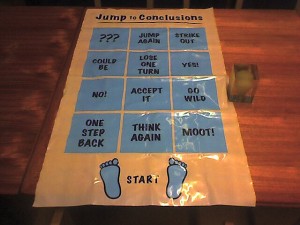10.3 Evaluating Observations
Fundamentally, all the content of mass communication originates with observation. In news reporting throughout most of the nineteenth century, a high percentage of the information originated with the reporter as the observer. Today, reporters and other mass communicators rely on others – from citizens with mobile phone cameras to specialists in various fields – as their observers for much more of the information that is transmitted.
When three tardy whales became stranded in the fall ice off the coast of Alaska, journalists from around the world converged on the area to cover the story. They described, taped, and photographed what they saw. But for additional sources, they used local villagers, marine biologists, state historians, engineers who knew about equipment to keep ice from forming, ice-breaking ship experts, meteorologists, and economists who could talk about the effect of so many visitors on the local economy.
Together, these varied and expert observers undoubtedly gave a more complete and accurate account of the stranded whale situation than reporters could merely using their own powers of observation.

An important qualifier about information that is collected through observation (yours or others’), it that observation derives from a single perspective with a particular point of view and that the information gathered through this method is always filtered through inferences and interpretations by the observer. In the case of the whales an outside observer at the scene might infer that this situation highly unusual and upsetting.
However, local villagers might tell the observer that every fall a few tardy whales are trapped by ice and die or are killed by hunters, that this is part of a relatively natural process. The villagers might even add that any whale so unwary as to stay too long in waters that freeze should not be freed to propagate its defective genes. What may seem like a tragic incident, the death of these trapped whales, to others would be a fitting and appropriate turn of events.
Bias on the part of the observer invariably affects the observation process. Professional communicators try to be aware of bias in themselves and in others upon whom they rely. They are aware that all individuals have assumptions about the world – beliefs about what is ordinary and normal, as well as convictions about what “ought” to be. These convictions influence what is perceived and how the perceptions are interpreted. It is the part of the communicator’s role to understand the underlying biases that those who provide information might have, helping to put their observations into a more accurate context.
The effect of the observer on the scene is an additional factor to be reckoned with. The presence (or intrusion) of observers can change the event being observed. This is most clearly seen in confrontations that take place specifically for the purpose of attracting media attention. Even in a mundane an event such as a parade, the bands make sure they are playing when they pass the television cameras. Similarly when an observer visits a classroom, kindergarteners (and their teachers too!) adapt their behavior to the presence of the stranger.
Observation, then, is affected by the inherent perceptual limitations of the observer, expectations, inference, bias, and the effect of the observer on the action. The mass communicator as an observer may be more or less affected by these factors than are others who supply information to the communicator. Skill, experience, and awareness of the problems in accurately observing events can help to counteract the inevitable difficulties of observation.

